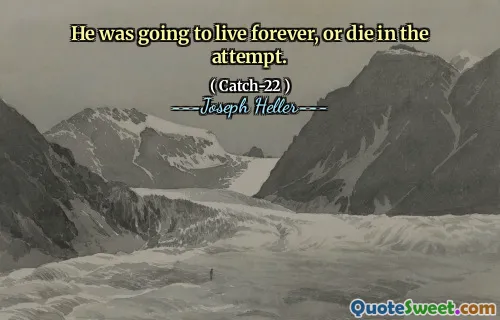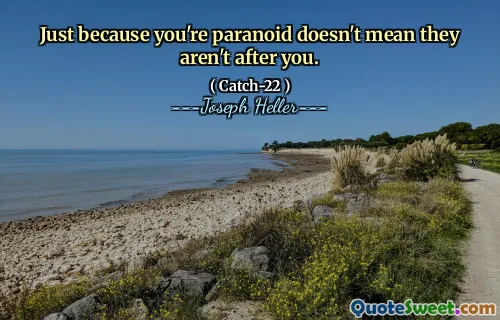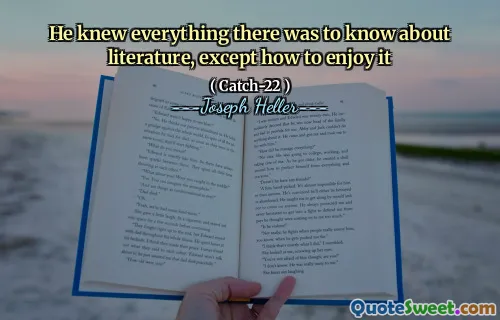
Oh, they're there all right, Orr had assured him about the flies in Appleby's eyes after Yossarian's fist fight in the officers' club, although he probably doesn't even know it. That's why he can't see things as they really are. How come he doesn't know it? inquired Yossarian. Because he's got flies in his eyes, Orr explained with exaggerated patience. How can he see he's got flies in his eyes if he's got flies in his eyes?
In "Catch-22" by Joseph Heller, the dialogue between Yossarian and Orr highlights the theme of perception versus reality. Orr explains that Appleby is oblivious to the "flies in his eyes," which serves as a metaphor for his inability to see the truth of his situation. This exchange illustrates how one’s perspective can be clouded by ignorance or denial, making it difficult to perceive the world accurately. Yossarian's confusion reflects a struggle to understand why some individuals remain unaware of their flaws or the realities surrounding them.
Orr's analogy underscores the challenges of self-awareness and cognitive dissonance. The concept of having "flies in one's eyes" cleverly conveys how distractions or blind spots can prevent someone from recognizing their own shortcomings. Heller uses this metaphor not only to critique the characters' ignorance but also to explore the broader themes of war, denial, and the human condition. Ultimately, the discussion points to the absurdity and complexity of human perception in a chaotic world.











